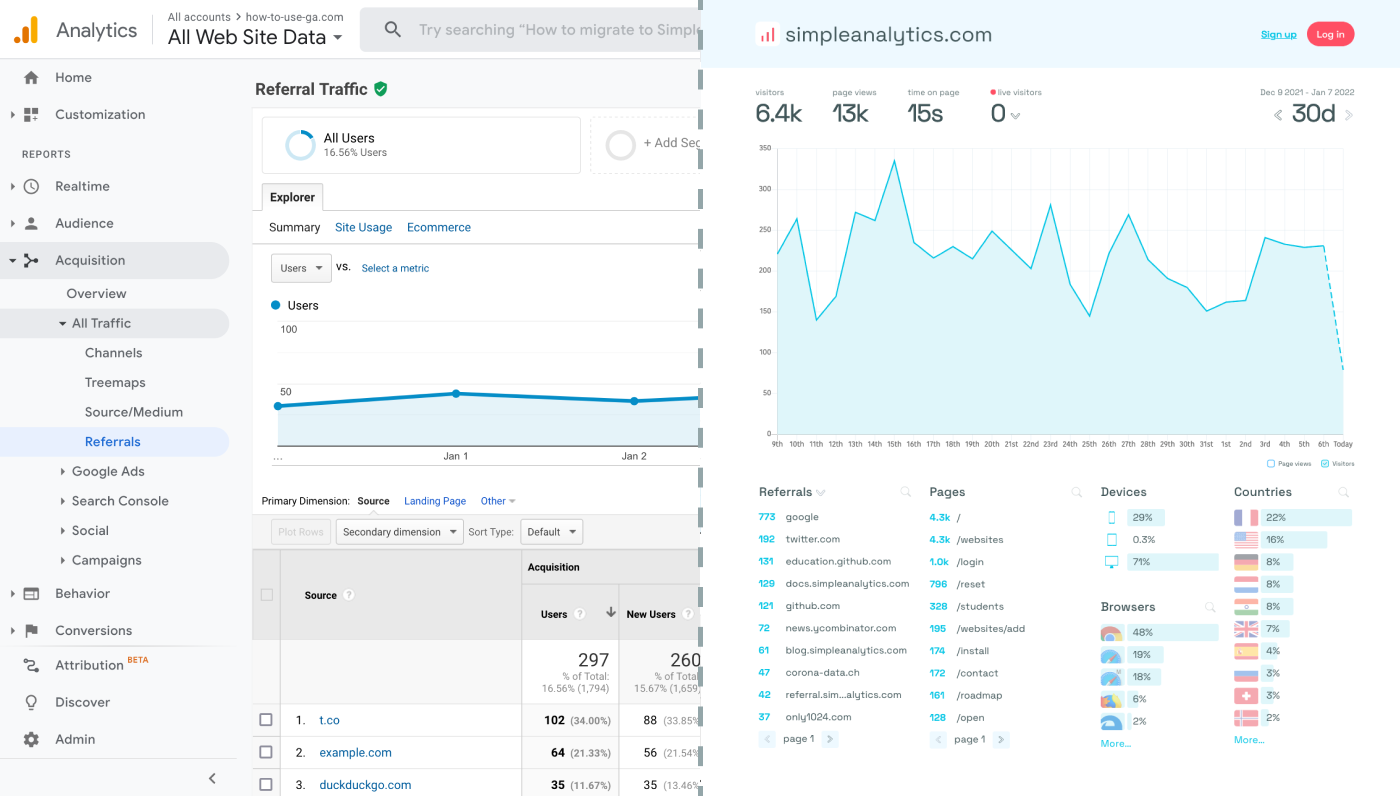Although Campaign Monitor offers its own analytics, the granular data from Google Analytics can give you better insights on your campaign's performance. This blog post will guide you through the process of adding Google Analytics to your Campaign Monitor email campaigns.
Let's dive in!
- Understanding the Integration
- Create or Access Your Google Analytics Account
- Enable Google Analytics Link Tracking in Campaign Monitor
- Create and Send Your Campaign
- Final Thoughts
Before we dig in I want to show you something. I promise it's worth it...
Google Analytics is great, but also complex and a bit clunky. If you just want a straightforward dashboard with the insights you need, GA is not a great place to start. Additionally, Google doesn't care about privacy and GA requires an annoying cookie banner.
That's why I built Simple Analytics, a privacy-friendly and simple analytics tool - no personal data, no cookies, just the insights you need in a straightforward dashboard.
Here is how it looks vs GA. Feel free to check our live analytics to get an idea for your project. (It is free btw)
All right, enough about us. Now let's get into answering your question!

Understanding the Integration
The integration between Campaign Monitor and Google Analytics works through the use of UTM parameters. These are short text codes added to URLs that track the effectiveness of online marketing campaigns across traffic sources and publishing media. By appending UTM parameters to the links in your Campaign Monitor emails, you can track specific metrics in Google Analytics, such as how many visitors came to your site from your email campaigns and what actions they took.
Create or Access Your Google Analytics Account
First, ensure you have a Google Analytics account set up for your website. If you’re new to GA, here’s how to start:
- Visit the Google Analytics website and sign in with your Google account. If you don’t have an account, you’ll need to create one.
- Follow the prompts to create a new GA4 property, selecting "Web" as your platform.
- After completing the setup, note your Measurement ID (formatted as "G-XXXXXXXXXX"), as you may need it later.
Enable Google Analytics Link Tracking in Campaign Monitor
Campaign Monitor simplifies the process of adding UTM parameters to your email links for tracking in Google Analytics:
- Log into Your Campaign Monitor Account: Access the dashboard and select the campaign you wish to track.
- Navigate to the Campaign Settings: Look for settings or campaign options, sometimes found under the ‘Configure’ section of your campaign setup.
- Enable Google Analytics Link Tracking: Find the option to enable Google Analytics tracking. This feature automatically appends UTM parameters to all links in your email campaign.
- Customize UTM Parameters (Optional): While Campaign Monitor automatically generates UTM parameters, you can customize them to align with your tracking conventions. Ensure you include parameters like
utm_source,utm_medium, andutm_campaignfor consistent tracking.
Create and Send Your Campaign
After enabling and configuring Google Analytics tracking:
- Design Your Email: Create your email content and design within Campaign Monitor.
- Add Links: Ensure all links that direct users to your website are included in your email. Campaign Monitor will automatically append the UTM parameters to these URLs.
- Send Your Campaign: Once your email is ready and your GA tracking is set up, send your campaign to your subscriber list.
Final Thoughts
Adding Google Analytics to your campaign can give you great insights. However, ask yourself: is Google Analytics the right tool for you?
GA is an overpowered solution for straightforward analytics. If you're looking for a simple and intuitive dashboard with the insights you need, there are better alternatives. Yes, I’m talking about my own product (Simple Analytics), but there are others out there as well.
I hated using Google Analytics for my projects. It's clunky, there are hundreds of dashboards and it doesn't look appealing. Also Google doesn't care about privacy or ethics. That's why I decided to build my own and more intuitive web analytics tool.
If this resonates with you, feel free to give Simple Analytics a spin. You just need to add the script and off you go. This takes about one minute- and there is a free version as well!
Enjoy!
